The Muscles of the Back
Muscles make up a large part of the anatomy (structure) of the back. They start at the top of the neck and go down to the tailbone.
Back pain is common and might be caused by a problem with a muscle. This article gives an overview of the back’s structure and its major muscles.
The Back’s Structure
The back’s structure is complex. It is made up of the spine, discs, nerves, muscles, tendons, ligaments, fasciae, and other structures. Each of these parts are individual structures that function together.
Here’s how:
The spine is made up of small bones called vertebrae. The vertebrae are different depending on the level of the spine. Each of them (except the top vertebra of the neck) has a central part (body), circular area (vertebral arch), and small projections (e.g. transverse process, spinous process) where the muscles attach. The transversospinal muscle group is a set of small, deep muscles that attach between the spinous processes of one vertebra to the transverse processes of the vertebra below it.
Ligaments hold the vertebrae together
Between the vertebrae, discs provide cushioning
Nerves extend through small holes in the vertebrae to different parts of the body
Tendons attach the muscles to the vertebrae
The muscles support the spine and allow for motion. Muscles are made up of individual fibers
The fascia is a thin casing of tissue that covers and supports the muscles
Back Muscles
Your back muscles extend from the bones of your neck (cervical vertebrae) to your lower back (lumbar spine) and then to the base of your lumbar spine (sacrum) and tailbone (coccyx). Some of these muscles are quite large and cover broad areas, e.g. large areas of the trunk.
Other muscles are small and cover much less space. Certain back muscles extend to other areas, like the ribs, shoulder, shoulder blade (scapula), upper arm (humerus), and thigh (femur).
Types of Muscles
There are three different types of muscles in the body. The myocardium, the specialized muscle of the heart; smooth muscle that makes up the walls of the intestines, stomach, etc.; and skeletal muscle that supports bones.
The back muscles are skeletal muscles. Tightening and relaxing the skeletal muscles creates movement. Flexor muscles bend the joints, while extensor muscles straighten them.
Every Muscle in the Body Has 3 Parts
Every skeletal muscle has three main parts: the origin, insertion, and belly.
Origin - where a tendon attaches the muscle to a less movable bone
Insertion - where a tendon attaches that muscle to a more movable bone
Belly - the thick part of the muscle
What Do Tendons Do?
In the back and elsewhere in the body, tendons attach muscles to bones. They help support bones and make them move.
Types of Back Injuries
There are many types and causes of back injuries. Muscle or tendon injuries are common ones.
Muscle Injuries
A strain is a stretched or torn muscle (also called a "pulled muscle"). Strained muscles can occur anywhere in the back. They often affect the muscles supporting the large curve of the lower back (lumbar spine).
What could cause a muscle strain? Recovering from quick movements, like a loss of balance.
Tendon Injuries
Tendon stretches or tears are also called strains.
What could cause a tendon strain? Overusing a tendon without allowing for rest.
Muscle and Tendon Injuries
Since tendons are located at the ends of muscles, where they attach to bones, a strain may involve both the muscle and tendon at the same time.
What could cause a muscle and tendon strain? Bending or twisting and lifting a heavy package.
If you are experiencing back pain, take a free Goodpath assessment for a personalized back pain program designed just for you.
Muscle Groups in the Back
As with other parts of the body, the back has several layers of muscles. Some are closer to the surface (superficial muscles). Moving deeper into the body, there are intermediate muscles and deep muscles.
Muscles and Movement
The back has different muscle groups that work together to allow movement. There are groups of muscles that move the head, shoulders, arms, hips, legs, and spine.
Some of the muscles are discussed in more than one of the next sections because they have more than one function. For example, the longissimus capitis muscle helps move the head, but it also helps extend - i.e. move the back.
Muscles in other parts of the body also help move the head, shoulders, arms, hips, legs, and spine. For example, a muscle group located in the chest also helps move the shoulders.
How Many Muscles are in the Back?
The back has a total of 40 muscles. There are 20 muscle pairs, one on each side of the body. Depending on how the muscles are counted (e.g. muscles that support breathing may or may not be counted), the total number may vary.
Serratus Posterior Suprior and Inferior
For example, the serratus posterior superior and the serratus posterior inferior muscles, although located in the back, support breathing, so they may be counted as respiratory muscles.
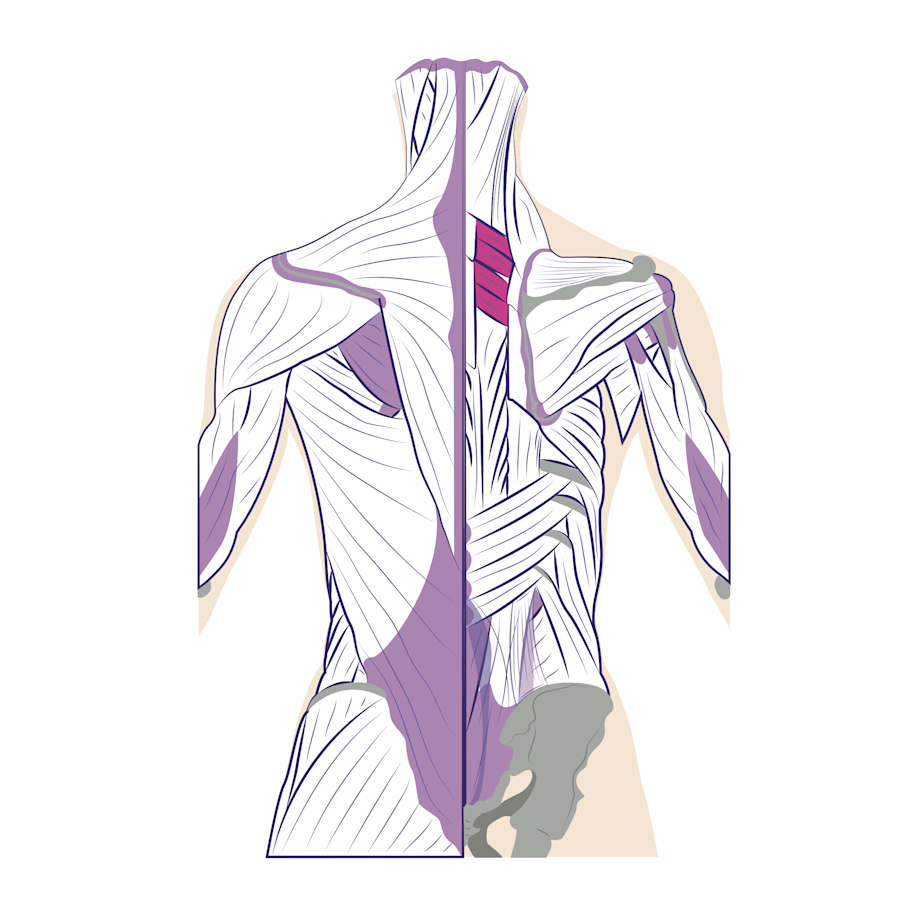

The Muscles that Move the Head
There are four sets of muscles that help move the head. They are the sternocleidomastoids, semispinalis capitis, splenius capitis, and longissimus capitis muscles.
Sternocleidomastoids
The sternocleidomastoids are strong, large muscles located on either side of the neck. Individually, they rotate the head left or right. Together, they flex or bend the head towards the chest. These muscles start at the breastbone (sternum) and collarbone (clavicle) and end behind the ears (at the mastoid process of the temporal bone of the skull).
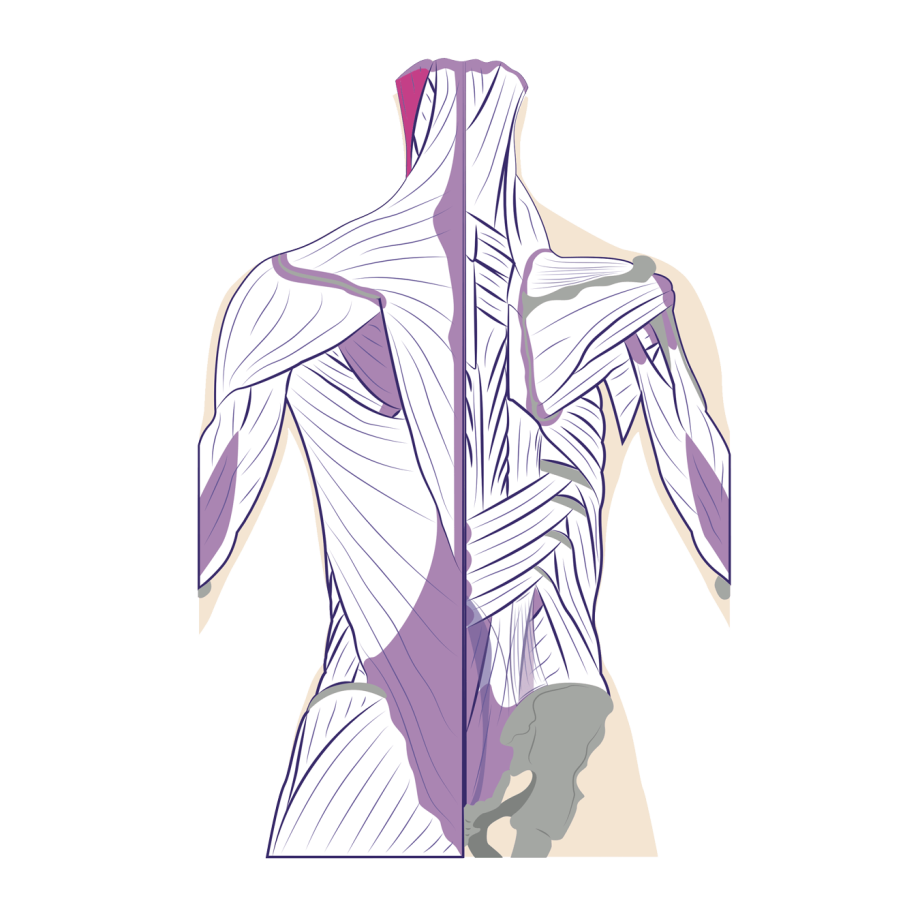
If you have a stiff neck, it may be a problem with one of your sternocleidomastoids.
Semispinalis Capitis
The semispinalis capitis, splenius capitis, and longissimus capitis muscles all help the head extend toward the back. They also work with sternocleidomastoid muscles to rotate the head left and right.

Splenius Capitis
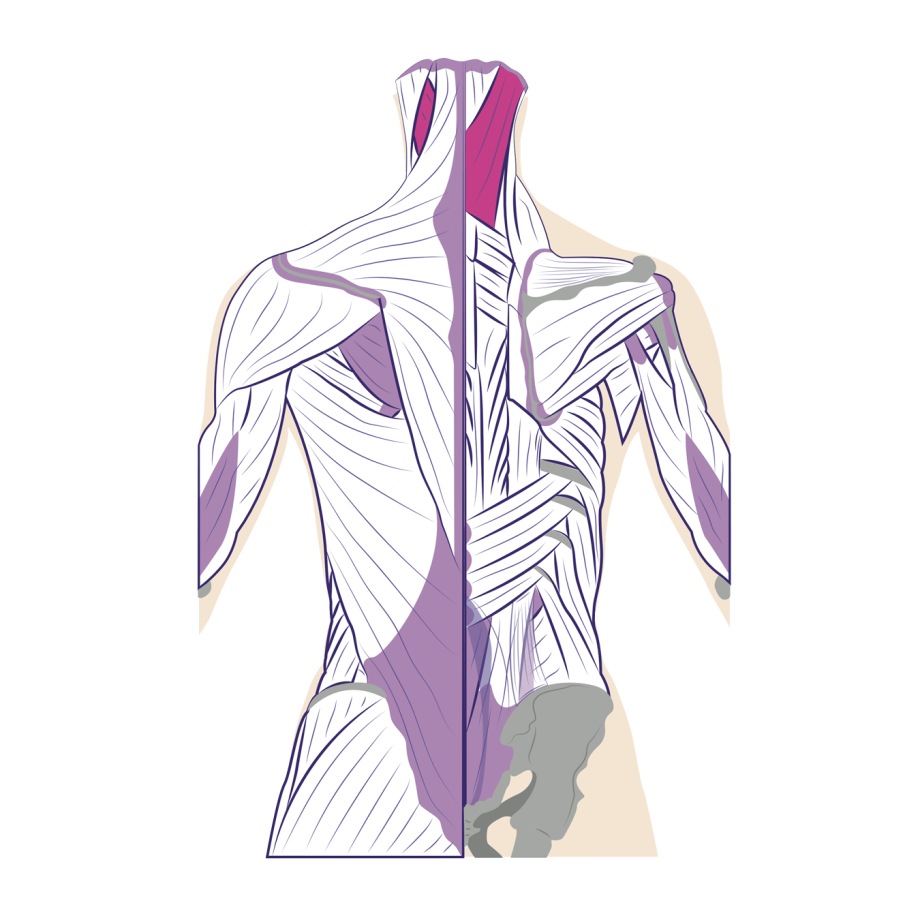
Longissimus Capitis

You might have soreness in these muscles if you have poor posture (i.e. your neck bent forward) when working on the computer.
The Muscles that Move the Shoulders
There are seven pairs of muscles that move the shoulders (three of these pairs are located in the chest, thus they are not discussed here). The other four pairs of muscles are the trapezius, levator scapulae, rhomboid major, and rhomboid minor (the rhomboids).
Trapezius
The large muscles of the upper back, also known as traps – are shaped like trapezoids or diamonds. They move the shoulder blades (scapulae). The trapezoid attaches to the occipital bone of the skull, the outer portion of the clavicle, and the acromion process of the scapulatype: asset-hyperlink id: 4ceVsPbn9ZiNHcahA0KpG0.
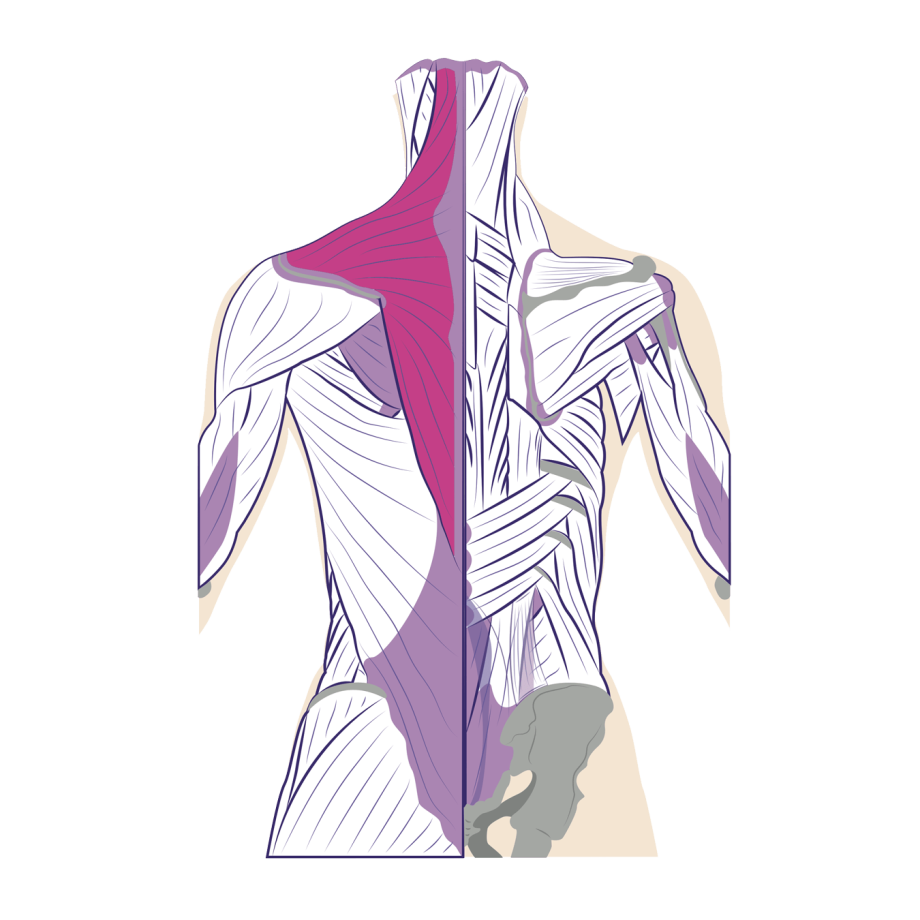
A swimmer may have pain in the traps or levator scapulae from overdoing it.
Levator Scapulae
The levator scapulae muscles raise the bones of the shoulders. "Levator" means raise (think of an elevator).

Rhomboideus Major and Minor
The rhomboid major and rhomboid minor are two pairs of muscles that also help move the shoulder blades.
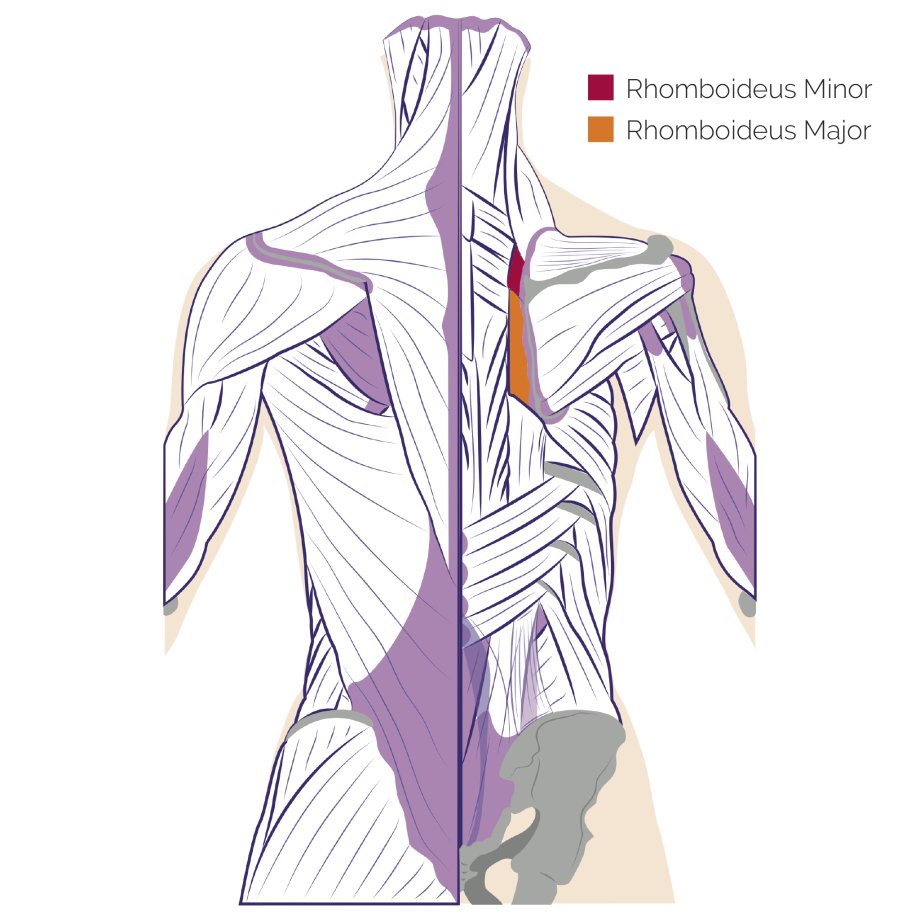
The Muscles that Move the Upper Arms
There are five pairs of back muscles that help move the shoulders and upper arms. They are the latissimus dorsi, supraspinatus, infraspinatus, teres major, and teres minor.
Latissimus Dorsi
The latissimus dorsi, often called the lats, are large, wing-shaped muscles that extend from the upper to the lower back. They help move the arms and shoulders.
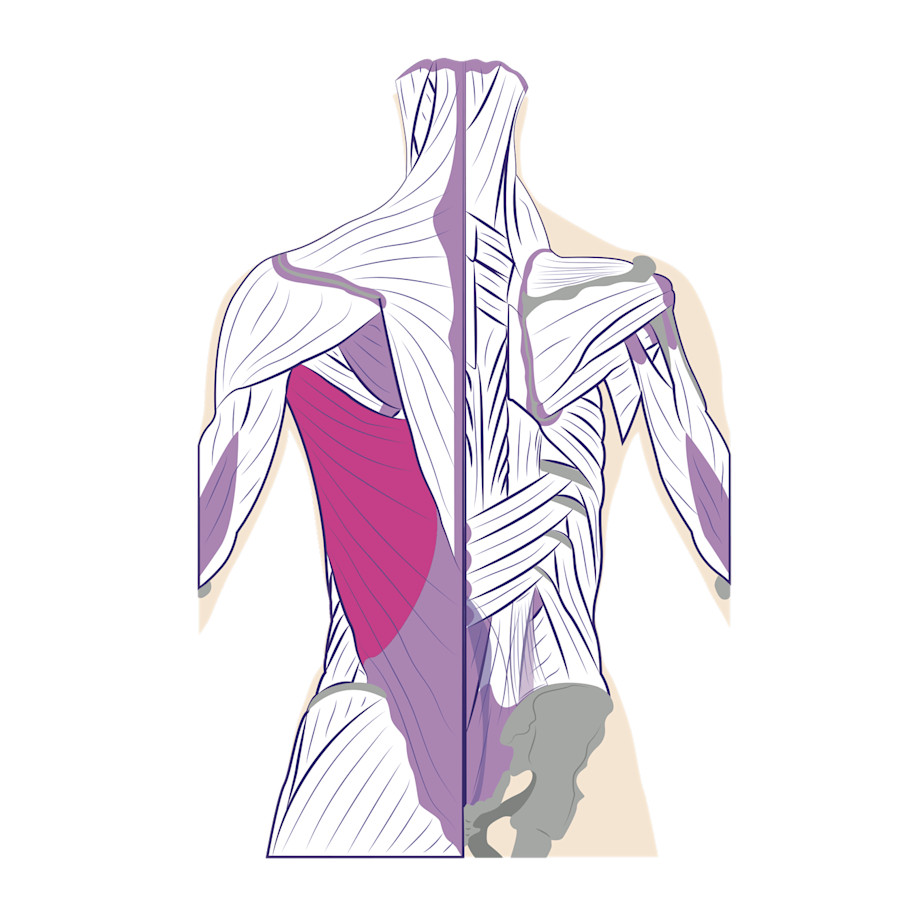
You can injure your lats from lifting something heavy over your head.
Supraspinatus and Infraspinatus
The supraspinatus muscles (with the deltoid musclestype: asset-hyperlink id: kRpgBuwllu02tJeA7AiCt) move the shoulders and upper arms. The infraspinatus muscles help rotate the shoulders and arms.

Teres Major and Minor
The teres major and minor muscles help move the shoulders and arms in many ways. For instance, the teres minor muscles aid in rotating or turning the arms.

A rotator cuff injury of the shoulder may involve the supraspinatus, infraspinatus, and teres minor muscles located in the back (and the subscapularis muscle located in the shoulder area).
The Muscles that Move the Spine
There are several pairs of deep muscles that help move the spine (again, the vertebrae) - not all are located in the back. Those that are include the sacrospinalis (spinalis, iliocostalis, longissimus) and quadratus lumborum muscles.
Sacrospinalis
The sacrospinalis (also called the erector spinae) is actually three muscles. They are the spinalis, iliocostalis, and longissimus.

Each of these muscles is divided into three parts that correspond to the part of the back where they’re located. For example, there is the spinalis thoracis muscle located in the upper back, or thoracic, area.
The sacrospinalis includes the:
Spinalis capitis, spinalis cervicis, and spinalis thoracis
Iliocostalis cervicis, iliocostalis thoracis, and iliocostalis lumborum
Longissimus capitis, longissimus cervicis, and longissimus thoracis
Spinalis and Iliocostalis
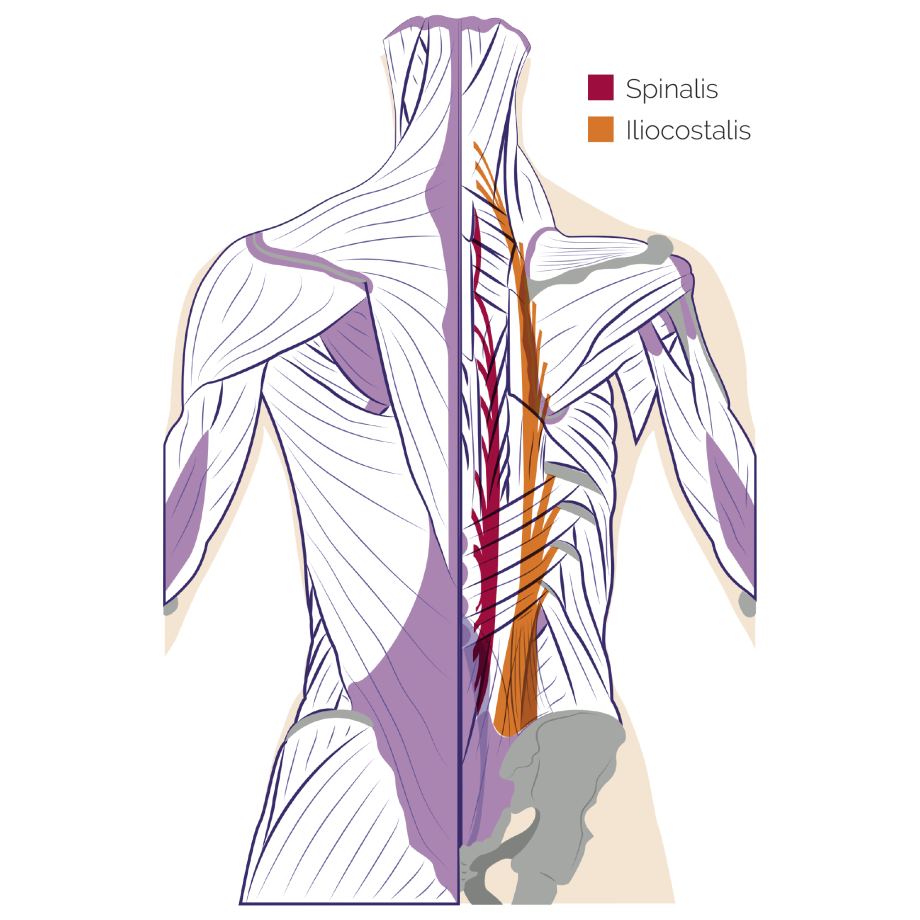
Longissimus and Quadratus Lumborum
In addition to moving the head, the longissimus helps to move the upper spine. The quadratus lumborum muscles are in the lower back. They help to bend the back to either side.
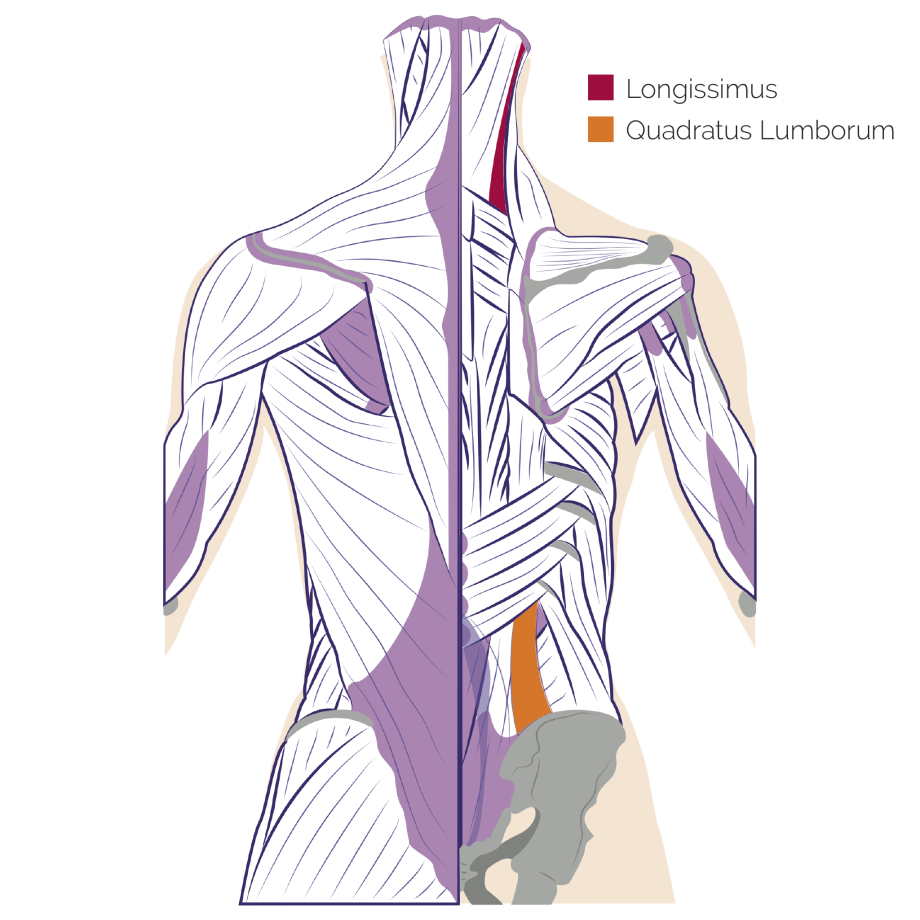
An injury to the quadratus lumborum may be the cause of low back pain.
The Muscles that Move the Upper Legs (Thighs)
There are many muscles that move the large bone of the thigh, including the iliopsoas (psoas major and iliacus) and psoas minor of the back. A large part of these muscles are anterior - i.e. - they are in the front of the body, but they extend to the lower back.
Iliopsoas
The psoas major and iliacus muscles make up the iliopsoas. These extend from the lumbar spine to each of the thigh bones. In addition to moving the thigh, these muscles help bend or flex the back.
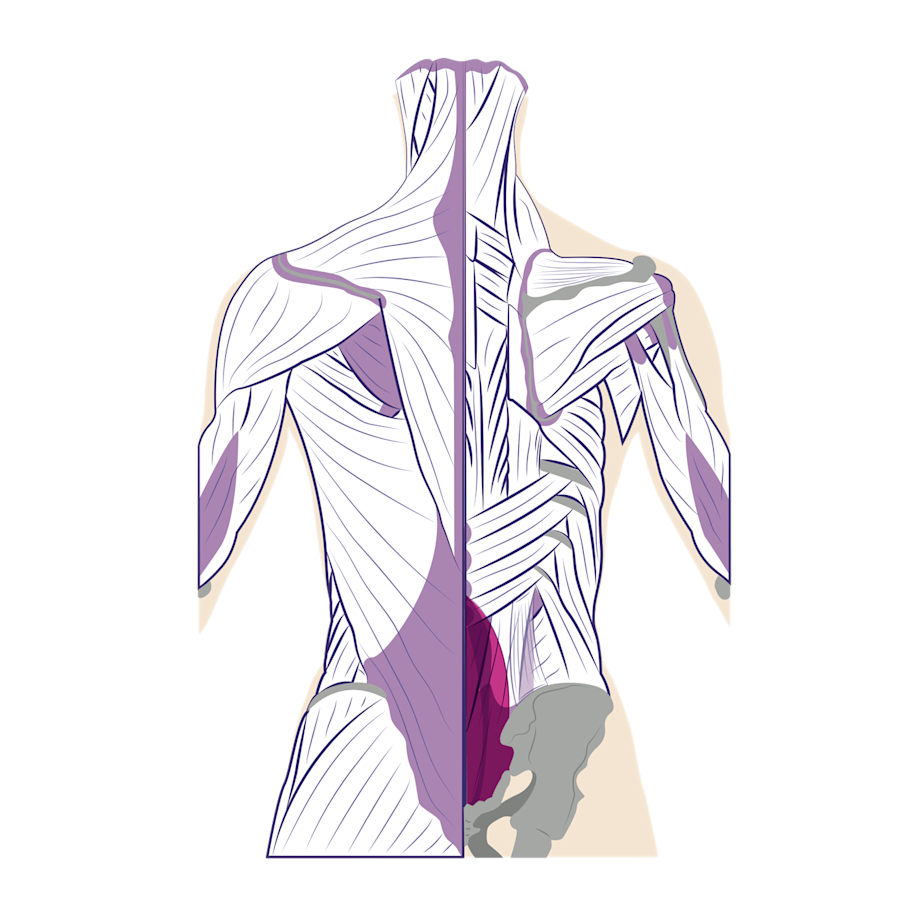
Psoas Major
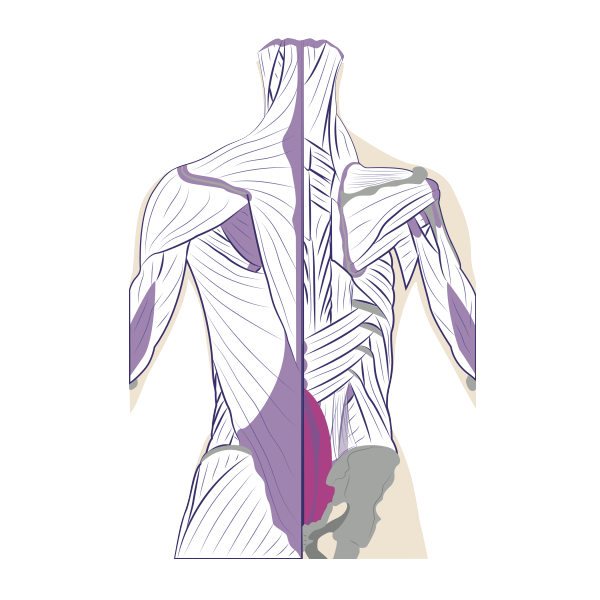
Psoas Minor
The psoas minor is a small muscle located in front of the iliopsoas.
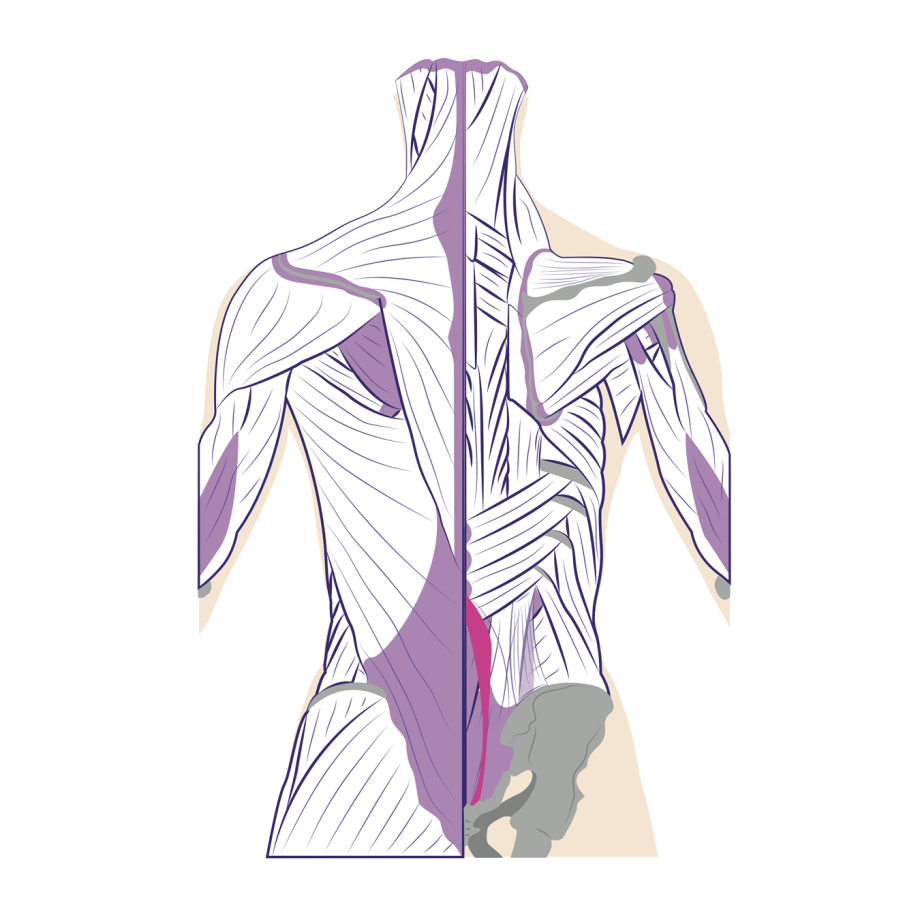
Hip pain may be related to the iliopsoas muscle.
Back Pain Prevention and Treatment
Back Pain Prevention
The following can help prevent injury and protect your back:
Take breaks if you’re sitting/standing for long periods of time - it helps prevent undue stress on your back
Gradually start any new activity
Stretch before activity and exercise
Maintain muscle strength - muscle weakness increases the chance of back injuries
Use proper carrying and lifting techniques
Use proper posture and positioning
Stay at a healthy weight
Treatment of Back Injuries
Treatment for back injuries may include supplements and topical products, exercise for strength and flexibility, and weight management. The above-listed preventive measures are also part of treatment - they can help protect the area and prevent further injury.
More involved treatment may include prescription medicines, injections, or surgery.
Keeping Your Core Strong
Your core is made up of the deep muscles of your abdomen and back. Having a strong core is essential to back health.
The core muscles include many muscle pairs, such as the transversus abdominus, pelvic floor muscles, quardatus lumborum, erector spinae, and multifidus muscles).
Summary
The back is made of the spine, discs, nerves, muscles, tendons, ligaments, and other structures. Injuries – such as a muscle or tendon strain – are common and can lead to pain.
GoodPath’s personalized approach to care helps provide relief faster. Take our assessment to begin a well-rounded back pain program in 4 minutes or less.
